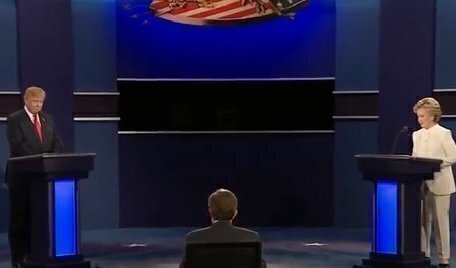The last phase of the contentious 2016 presidential election will take place on Friday afternoon, January 6, 2017, at 1 p.m. during a joint session of Congress. Here’s what to expect, if you plan to follow the event on C-SPAN.
Link: Watch Live on C-SPAN
 As you’ll recall, the general election on November 8, 2016 resulted in Republican candidate Donald J. Trump besting Democratic nominee Hillary Clinton in the tally of Electoral College votes. The preliminary Electoral College vote count was 306 votes for Trump and 232 votes for Clinton, with challenges expected in three states: Michigan, Pennsylvania and Wisconsin.
As you’ll recall, the general election on November 8, 2016 resulted in Republican candidate Donald J. Trump besting Democratic nominee Hillary Clinton in the tally of Electoral College votes. The preliminary Electoral College vote count was 306 votes for Trump and 232 votes for Clinton, with challenges expected in three states: Michigan, Pennsylvania and Wisconsin.
On December 13, the 50 states and the District of Columbia filed certificates of ascertainment six days prior to the Electoral College voting. Each certificate confirmed the presidential election results within a state and listed the slates of electors representing each candidate.
On December 19, the electors met in 51 locations around the country. Several faithless electors were barred from voting under state laws, while others were permitted to vote for qualified candidates other than the people that had pledged to vote for.
In the end, Trump received 304 of the 306 votes pledged to him by electors back on November 8. Clinton received 227 of the 232 votes pledged to her. Other electoral votes went to Colin Powell (three), John Kasich, Ron Paul, Bernie Sanders and Faith Spotted Eagle (one vote each). Also receiving votes for Vice President were Elizabeth Warren, Susan Collins, Maria Cantwell, Winona LaDuke, and Carly Fiorina.
After the Electoral College voting, official Certificates of Vote were sent to the Vice President (acting as President of the Senate), state officials, the federal court that had jurisdiction over the state capital area, and the federal Archivist. The vote certificates were due in Washington by December 28. Those have been received and made public on the National Archives website.
On Friday afternoon, current Vice President Joe Biden will preside over the official vote counting in a joint session of Congress held in the House’s chambers. The Vice President will open the vote certificates and pass them to four members of Congress, who count the votes. If there is a majority winner with at least 270 electoral votes and there are no objections filed by members of Congress, the Presidential election is certified and over.
However, the Vice President must also ask if anyone objects in Congress during the vote counting as each state result is announced: “Upon such reading of any such certificate or paper, the President of the Senate shall call for objections, if any,” the law reads.
If one member of the House and Senate each object, in writing, to the same elector or slate of electors for a state, the House and Senate go into private meetings to vote on the objections. The Senate will retire to its own chambers to meet and the House will remain in its location. Each session can last no longer than two hours and each member can speak for no more than five minutes. The House and Senate must both agree to accept an objection.
The last time this happened was on January 6, 2005. When Ohio’s votes were announced for George W. Bush, the chair recognized Stephanie Tubbs Jones, a House Representative from Ohio. “Mr. Vice President, I seek to object to the electoral votes of the State of Ohio on the ground that they were not, under all of the known circumstances, regularly given and have a signed objection, and I do have a Senator,” Jones said, acknowledging that Senator Barbara Boxer has signed on to her objection.
Vice President Dick Cheney then called for a recess for each chamber of Congress to discuss the objection in separate sessions. When the joint session resumed, the votes were announced: Only one Senator and 33 House members agreed to the objection. “Pursuant to the law, chapter 1 of title 3, United States Code, because the two Houses have not sustained the objection, the original certificate submitted by the State of Ohio will be counted as provided therein,” Cheney announced, and the vote tally continued.
Without a delay caused by objections, the vote counting goes quickly. On January 4, 2013, the vote count for the Obama-Romney results started at 1:05 p.m. and concluded at 1:29 p.m. with no objections raised.
“This announcement of the state of the vote by the President of the Senate shall be deemed a sufficient declaration of the persons elected President and Vice President of the United States each for the term beginning on the 20th day of January, 2013, and shall be entered, together with the list of the votes, on the Journals of the Senate and House of Representatives,” Biden announced, ending the joint session.
Back in January 2001, the vote counting was delayed by a protest on the floor about Florida’s Electoral Votes led by House members belonging to the Congressional Black Caucus. The presiding officer, Vice President Al Gore, ruled the protest out of order, and he had the distinction of declaring his opponent, Bush, as the winner of the presidential election around 3 p.m.
From Friday afternoon until 12 p.m. on January 20, 2017, the winner is officially the President-elect until taking the oath of office.







